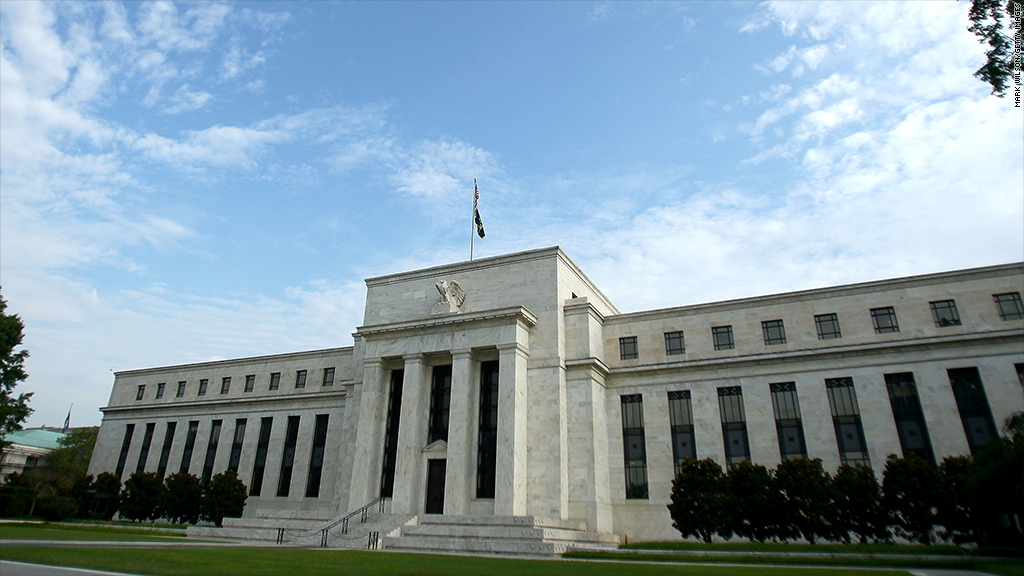
Oops. The Federal Reserve accidentally emailed the minutes from its March meeting to 154 people a day early, and those people included employees at some of the world's largest banks.
While no major news was expected to come from the minutes, they are nevertheless a key document that can move markets from time to time. Wall Street players often dig deep into the minutes for hints about when the central bank may pull back on its bond-buying policy or raise interest rates.
For that reason, the minutes are usually highly protected by the central bank and their release is supposed to be executed carefully.
A Fed spokesman told CNNMoney the mistake was "entirely accidental," and it was a "human error," not a technological one.
The 154 individuals who received the minutes on Tuesday included Congressional employees, but also employees at some of the world's largest banks, such as Goldman Sachs (GS), JPMorgan Chase (JPM), Citigroup (C), UBS (UBS) and HSBC (HBC). Most of the people at these banks appear to work in legislative affairs (a.k.a. lobbying).
Employees of trade organizations like the American Bankers Association, the National Association of Realtors, and the National Credit Union Administration were also on the distribution list.
They received the minutes shortly after 2 p.m. on Tuesday, but not one person reported the early breach to the Federal Reserve.
The Federal Reserve discovered the mistake on its own early Wednesday and then decided to release the minutes to the broader public at 9 a.m.
At this point, it's not clear whether any trading took placed based on the early release, but the Federal Reserve Board's Inspector General will conduct an initial investigation of the error.
"We will be working with market regulators, the SEC and CFTC to insure they have the information they need to evaluate the incident," a Fed spokesman said.
What the minutes said
The minutes contained very little new information about Fed policy. The main takeaway is most Fed members think the central bank should continue buying $85 billion in assets a month, at least through midyear.
But some members argued in favor of tapering down the purchases gradually while others didn't see a need to decrease the purchases until the third quarter. Two said some purchases would probably continue into 2014.
The Federal Reserve's current policy includes buying $45 billion in Treasuries and $40 billion in mortgage-backed securities each month. The main intent is to lower long-term interest rates. But this program, known as quantitative easing, is cited by some as a main reason the Dow and S&P 500 are now at record highs.
The central bank has also kept short-term interest rates near zero since 2008, with an aim to boost economic activity.
The Fed has said it plans to keep that rate near zero until the unemployment rate falls below 6.5% or inflation exceeds 2.5% a year. Most Fed officials don't expect that to happen until 2015.
Related: When will the Federal Reserve be led by a woman?
The minutes capture general themes from the Fed's internal policy meetings, the last of which took place March 19-20. When Fed officials met at that point, it looked like the job market was gaining momentum.
Data released since then, however, has shown that job growth slowed in March.
Many economists still expect the Fed to start gradually decreasing its asset purchases later this year and end them completely in early 2014. But if the March jobs report marks the start to a weaker trend in hiring, that timetable could change.
Fed Chairman Ben Bernanke said in March that he will be watching for signs of a "spring slump" in hiring, and other Fed officials have reiterated that sentiment since then. Speaking Wednesday morning on CNBC, Atlanta Fed President Dennis Lockhart said he wants to get beyond a mid-year "swoon."
"I think we need a few more months of really solid data and solid evidence that the recovery is moving ahead," he said.
The Fed's next meeting is a two-day meeting that concludes on May 1.


